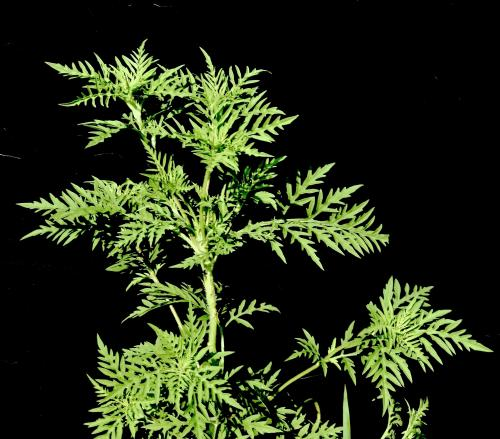Common Ragweed

If you have been suffering from hay fever this fall a common weed is your culprit rather than often blamed goldenrod. Common Ragweed is an annual, herbaceous weed that is native to North America. This weed is common in crop fields, non-crop areas, waste areas and landscapes where it can be a major issue. Ragweed leaves are narrow to broadly egg shaped, hairy, compound and deeply lobed. The flowers on these plants are inconspicuous being green in color and on the tips of the stem. This plant has male and female flowers held on different parts of the plant. All members of this family are abundant pollen producers which leads them to being a major allergy causing plant in the late summer. Ragweed can grow up to 6 feet tall depending on the soil and growing conditions. This weed can be confused with western ragweed however western ragweed is a perennial plant and has leaves that have fewer lobes compared to common ragweed. Common ragweed is an important plant for various wildlife species as honeybees will collect the pollen from the plant, many species of upland game birds and songbirds rely on the seeds for a food source especially in the winter since the seeds usually will stick up above the snow level and many species of insects feed extensively upon the leaves throughout the growing season. Control can be difficult as common ragweed has seeds that persist in the ground for years and it was one of the first plants to develop resistance to herbicides. The easiest way to control this weed is through physical removal or using a mix of chemicals however, unless it is in a location that it is detrimental it might be beneficial to leave it for food for songbirds in the winter.

Have questions? Contact our office where our Horticulture Extension Agent will assist you with questions.
Phone: (316) 321-9660
Email: callae@ksu.edu